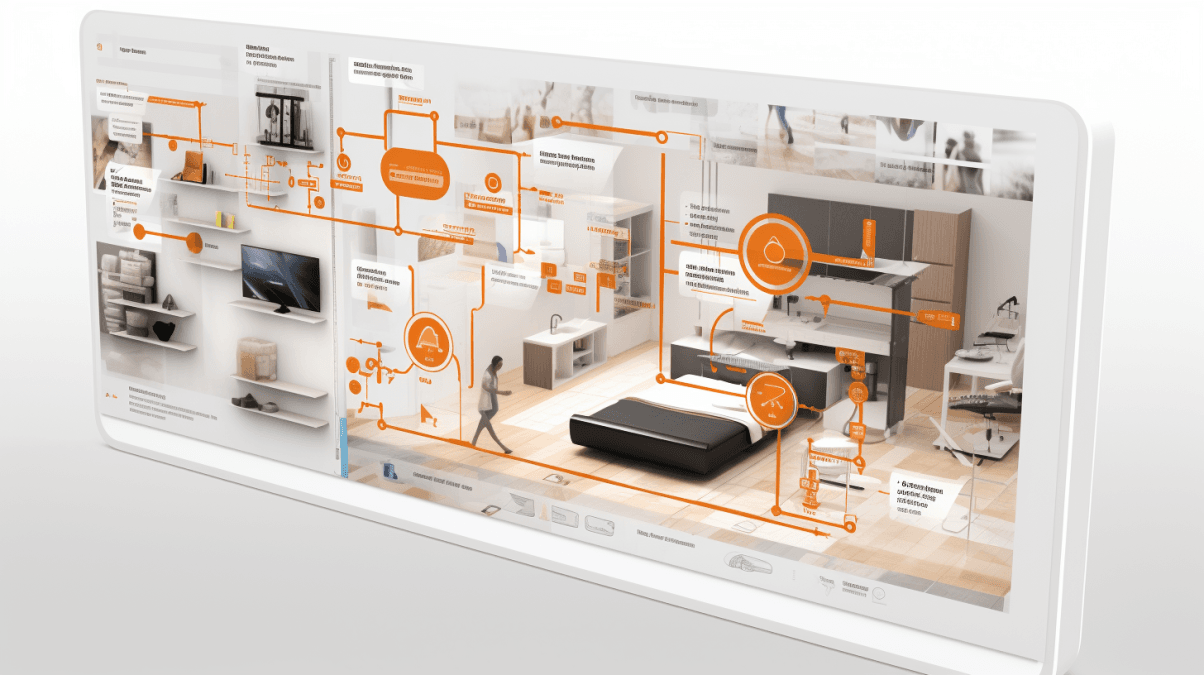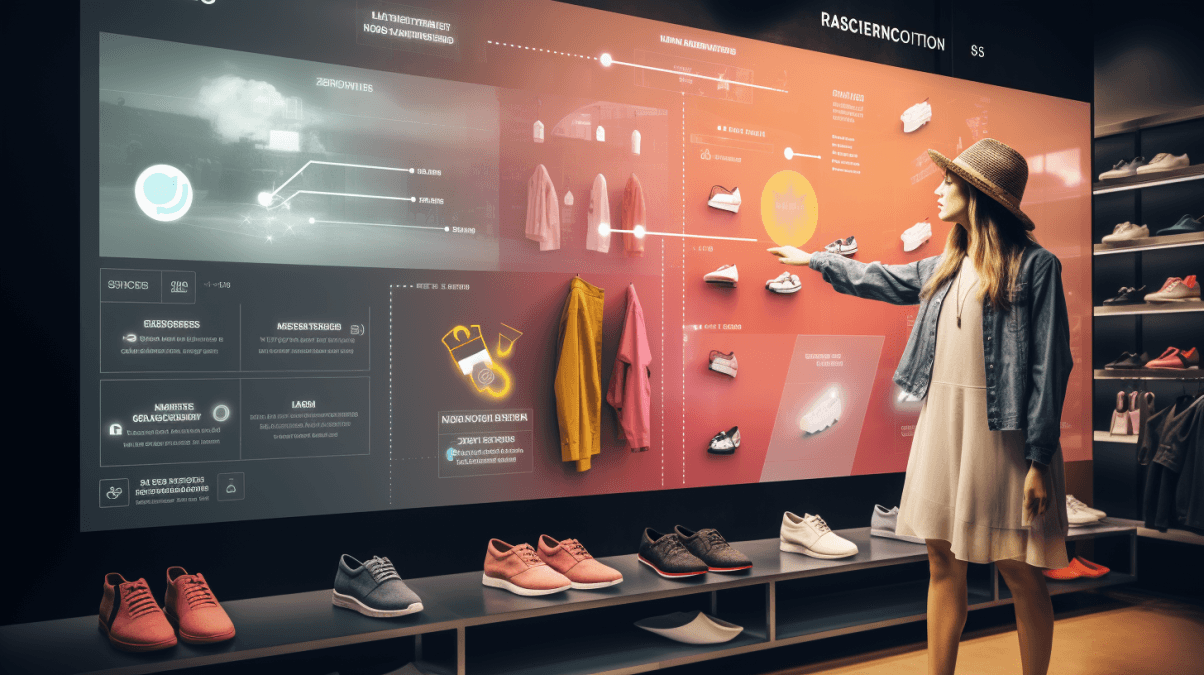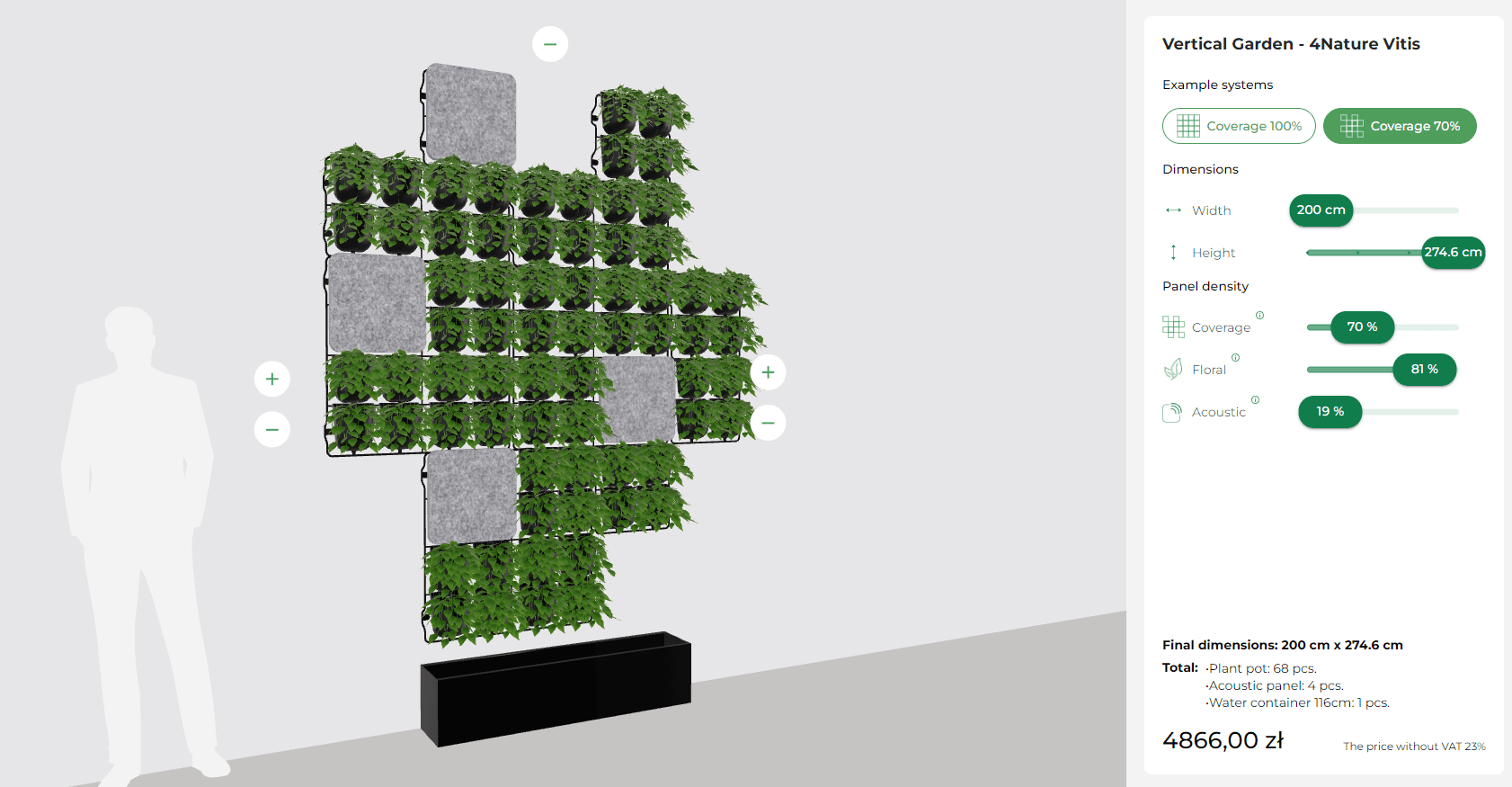
Product Configurators and PIM: A Powerful Duo
Thinking about adding a product configurator to your online store? Curious about how it works with PIM? Dive into our article to see how PIM and configurators can work magic together.
Find out about a smooth solution that's sure to wow your customers and make their shopping journey unforgettable. Jump in and keep your edge in the online world!
Complexity Meets Customization
The digital marketplace has seen a significant shift in the nature of the products it sells. One prominent factor is the increasing complexity of products available online.
From modular furniture to personalized fashion pieces. The e-commerce space has products that need thorough understanding before purchase.
Simultaneously, a growing consumer desire for uniqueness has amplified the demand for customization. Today's consumers don't just want a product. They want it tailored to their preferences, be it in color and functionality.
This dual trend of complexity and customization is reshaping e-commerce. It compels businesses to innovate in product presentation, user education, and customization capabilities.
As these trends intensify, businesses that can blend comprehensive product information will excel. Those offering user customization options will be best positioned for success.

The Rise of Product Configurators
The digital transformation of commerce has followed a natural evolutionary pathway. This has culminated in the advent of product configurators.
These cutting-edge tools allow businesses to present a virtual canvas. Here, customers can tailor products to their unique preferences, adjusting all needed features.
A product configurator is an interactive online platform that facilitates the customization process. It enables shoppers to visualize and alter aspects of a product in real-time.
This level of visualization and instant modification was unattainable in traditional brick-and-mortar stores. In-person shoppers had to rely on imagination or fixed samples. Online consumers enjoy a dynamic and immersive customization experience. This bridges the gap between desire and purchase.
From Personalization to Augmented Reality
Online shopping has advanced significantly with the introduction of product configurators. They offer a broad spectrum of user experiences. Here's a brief breakdown of the various types:
Configuration type:
- Personalization: This type involves adding distinct elements like text, numbers, or messages to an existing design. It bestows products with a unique touch tailored to each consumer.
- Customization: Going a step beyond, customization provides a template. Users can infuse their creativity through various design features such as colors, patterns, logos, and more.
- Parametric Configuration: This configurator is all about flexibility. Users have the liberty to alter design dimensions like width and height. This ensures products fit their exact needs.
Visualization type:
- Static 2D: As the name suggests, this offers a fixed, flat image. While users can modify components like color or material, the 2D nature restricts rotational views. One must rely on multiple uploaded images to get different perspectives.
- Interactive 3D: A dynamic upgrade from 2D, these configurators are immersive. Users can spin products, enjoying a 360-degree view. Simultaneously, they can change customizable aspects, ensuring a comprehensive understanding of their purchase.
- Augmented Reality (AR): The pièce de résistance in configurator technology is AR. These configurators skyrocketed in demand, especially during lockdowns when physical shopping was restricted.
Unlike the immersive alternate world of Virtual Reality, AR bridges the gap between the digital and real. Imagine visualizing a piece of furniture in your actual living space before buying it. This ensures it fits perfectly in aesthetics and size. This innovation has revolutionized e-commerce, enhancing user experience and confidence in online purchases.

Wait, 13 Benefits?!
1. Boosted Conversion Rates and Average Order Values
As users personalize items, they form a unique attachment, making it their product. This connection amplifies purchasing desire, skyrocketing conversion rates.
But there's more: the deeper the user's engagement, the likelier they are to add that extra feature or add-on.
By making "just one more addition" so enticing, businesses effortlessly raise their average order value.
In essence, personalization fosters deeper customer connections. It also drives higher sales and conversions. It's the undeniable magic of tailored shopping experiences.
In essence, personalization not only fosters deeper customer connections but also drives higher sales and conversions. It's the undeniable magic of tailored shopping experiences.
2. Mitigation of Product Returns
Misaligned customer expectations due to inadequate product representation can lead to increased returns.
By enhancing product visualization customers meet a truer sense of the product. This decreases potential dissatisfaction upon delivery.
3. Distinct Competitive Advantage
Offering an enriched shopping experience through configurators can distinguish your platform from competitors. This compels customers to choose your brand.
When you're leading the market, it's essential to fortify your position against competitors. Implementing product configurators is a potent strategy. It establishes a sophisticated entry barrier that keeps rivals at bay.
4. Enhanced Customer Experience
The interactive shopping experience offered by a configurator can improve overall customer satisfaction. Satisfied customers are more inclined to share their positive experiences. This subtly promotes the brand among their circles.
5.Invaluable Customer Insights
Configurators yield rich data about customer preferences. This data assists e-commerce businesses in inventory planning and pricing strategies. It also helps in identifying potential product enhancements.
By analyzing how users interact, businesses can track which products or features are tested most often. They can also pinpoint aspects that users spend significant time on.
This granular insight aids in inventory planning and pricing strategies. It also offers clues for potential product enhancements and areas requiring more attention.
6. Streamlined Sales Cycle
Product configurators tend to expedite the decision-making process for customers. This shortens the overall sales cycle.
7. Minimized Errors
By automating customization, configurators can drastically reduce human errors. This ensures customers receive exactly what they've ordered..
8. Engaging Shopping Experience
With interactive 3D visualizations and myriad customization options, configurators transform shopping. It changes from a mundane task to an engaging experience.
Moreover, the integration of Augmented Reality (AR) elevates this experience. By allowing customers to visualize products in their own homes, AR adds a personal touch. This makes the shopping process even more engaging and tailored to the individual's environment.
9. Always Updated Product Info
Configurators can be seamlessly updated. This ensures customers always have access to the latest product information and options.
Unlike print catalogues, which lag in update frequency, online configurators can be revised. This allows for swift updates.
This adaptability allows to quickly respond to shifts in demand or changes in consumer preferences. It helps in maintaining a competitive edge and ensuring relevance in a dynamic market.
10. User-Friendly Interface
Designed for a broad audience, configurators are intuitive, catering to both tech-savvy and novice users.
Beyond mere design, they intelligently manage and guide the customization process. This ensures users only choose valid configurations.
This eliminates the hassle of tracking possible and impossible combinations. It ensures a smooth, error-free customization journey for every user.
11. Diverse Customization Capabilities
From colors and materials to sizes and designs, configurators offer a plethora of options. They provide a wide range of customization choices.
Managing such a vast array of choices through a mere list would be chaotic, if not entirely impossible.
Configurators not only make these myriad options accessible but also structured. This ensures users can effortlessly control their product preferences without feeling overwhelmed.
12. High-quality 3D Visuals
Modern configurators leverage advanced 3D rendering, offering lifelike product representations.
Modern browsers, internet connections, and mobile devices are more powerful than ever. Thanks to that, even complex models can be rendered smoothly. This maintains both detail and aesthetic appeal without any compromise.
This ensures users enjoy a seamless visual experience regardless of the device they're on.
13. Real-time Pricing
As customers tailor their products, configurators provide instant price updates. This promotes transparency and budget adherence.
Navigating the complex terrain of variable pricing for multifaceted configurations can be daunting. With a configurator, customers continuously see the price.
Businesses can also quickly adjust prices based on stock, supplier costs, and market demand. This flexibility ensures both clarity for the consumer and adaptability for the retailer.

Behind the Scenes of Product Configurators
I know what you're thinking: deploying a configurator must demand hundreds of hours of meticulous labor, right?
At the heart of every product configurator is a trove of complex data. This data not only defines the product's parameters but also delineates which configurations are valid. Storing such intricate data requires a robust database. This database is optimized to swiftly retrieve and present information to users in real-time.
Integration is the next challenge. Seamlessly connecting the configurator with an existing e-commerce platform is crucial. It's also vital to integrate it with an inventory management system.
And how to "teach" a computer about valid configurations? This requires setting rules and conditions within the system. For example, a car configurator might need logic dictating that a particular engine is compatible. It can only be paired with specific car models.
Maintenance is the final piece of the puzzle. Keeping the configurator efficient means regularly updating these rules. It's also essential to ensure the database is optimized for speed.
How to solve this?

PIM to the Rescue
Here comes PIM! Product Information Management (PIM) systems are specifically designed for this purpose. They tackle the challenges of complex data handling.
As configurators evolve, the data they rely on can become increasingly complex. PIM systems streamline this process.
Need to know more about PIM?
Check out our article that explains why you need a PIM.
Moreover, PIMs ensure data consistency across all platforms. So, whether a user is configuring a product on a desktop or mobile, the information remains accurate and uniform.
The integration capabilities of PIMs are noteworthy. They can seamlessly connect with configurators. This ensures that all valid configurations are promptly and accurately reflected. This reduces errors, averts customer disappointments, and ultimately enhances user experience.
The challenge of "explaining to the computer" valid configurations is simplified with PIMs. They can store intricate rule-based relationships between products and components.
This rule-based storage makes maintaining valid configurations more efficient. It reduces the overhead of constant manual checks.
Additionally, PIMs adapt to market changes. They allow you to adjust product details in response to stock fluctuations, supplier changes, or shifting demands.
While the task of managing complex configurator data might seem overwhelming, PIM systems offer a solution. This ensures businesses stay agile and customer-focused.
MadMax x SeeMyModel
If you're thinking about the next steps for implementing a configurator for your company, we're here to guide and enhance that journey.
We highly recommend the offerings from SeeMyModel. Additionally, our team can assist and guide you with the PIM aspect.
Combining the expertise of our PIM team with the advanced configurator from their team sets the stage for your success.
With our joint experience we promise a synergistic approach. Together we can craft a interactive and user-friendly product customization experience on your website.
We'll ensure that the product data is streamlined and the visuals are top-notch. The user experience will be exceptional, setting your e-commerce platform apart from the rest.


You can check more SeeMyModel solutions on their page.
Summary
Product configurators have emerged as a game-changer. They allow to offer customers an interactive platform to customize products. All that in real-time, bridging the gap between desire and purchase.
These tools can range from basic personalization to AR visualization. All of them enhance user engagement, boost conversion rates, and minimize product returns.
They offer many benefits, including real-time pricing, high-quality 3D visuals, and user-friendly interfaces.
However, these configurators may be data-heavy, demanding meticulous integration and maintenance.
PIM systems address this issue by centralizing product data, simplifying the complexity . They ensure data consistency, simplify integration with configurators, and adapt quickly to changes.
With product configurators you can enhance the online shopping journey. This allows you to provide a superior, immersive, and efficient experience for users.
Ask us any question
We will respond within 8 hours and guide you in the right direction.
Your data is safe with us. We will not share your email with anyone, and we will use it only to contact you regarding your inquiry.
